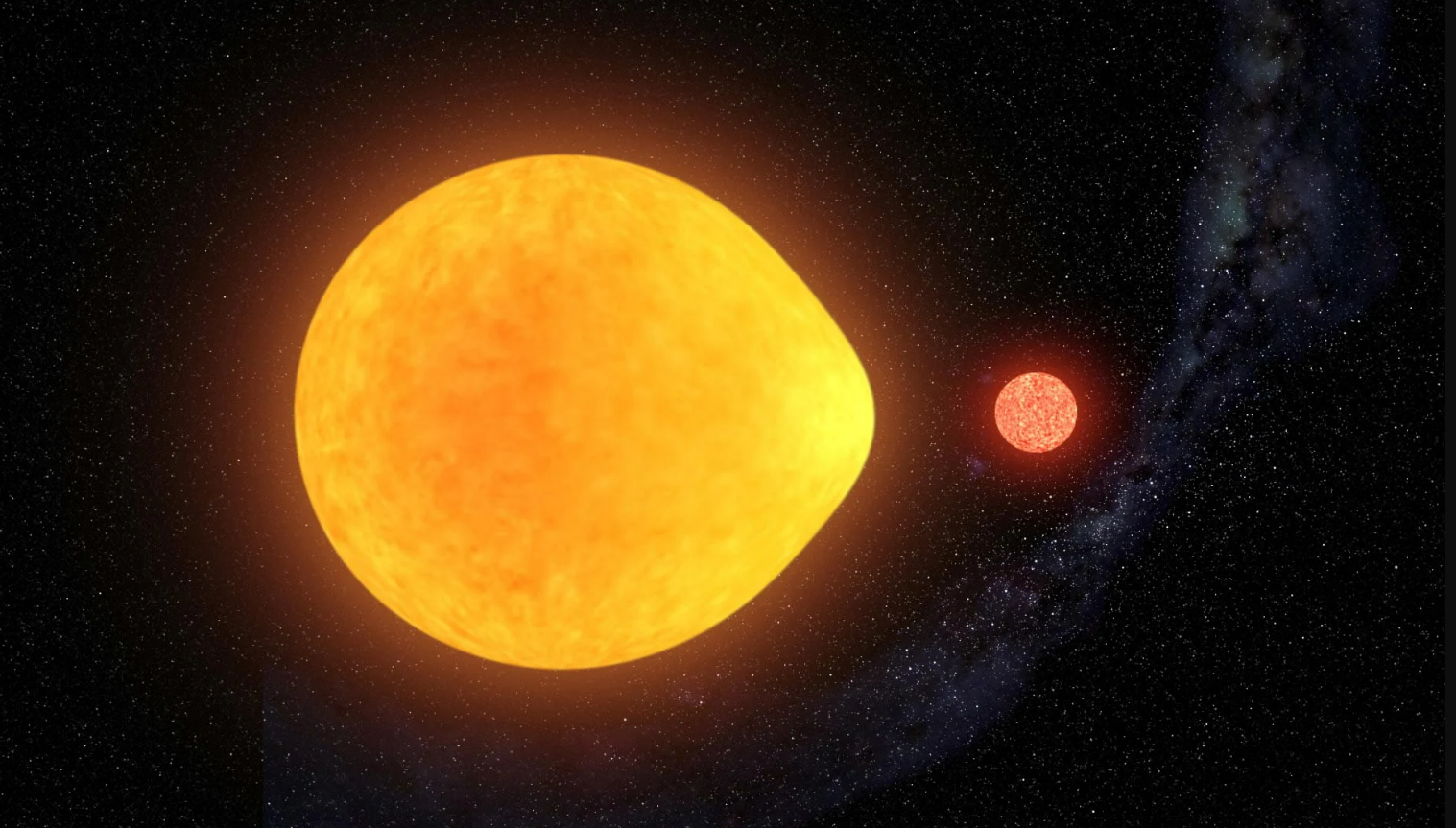Astronomers have studied the star TIC 435850195. It turns out that it belongs to a rare type of tidally pulsator variables. These luminaries expand their envelope, not simultaneously in all directions, but only in the direction of their companion.

Tidally pulsator star (TTP)
Astronomers have discovered a new tidal pulsator star (TTP) by analyzing data from NASA’s Transiting Exoplanet Survey Satellite (TESS). The new pulsator, designated TIC 435850195, belongs to a rare class of tri-axial TTPs.
These so-called TTPs are pulsating stars in close binaries in which the pulsation axes are tilted into the orbital plane by the tidal bulge induced by their companions. In general, the pulsation axis in such systems coincides with the tidal bulge rather than with the spin axis of the star.
TTR is a rare find, as only a few such pulsators have been discovered to date. Only one of them, known as TIC 184743498, shows pulsation along three different axes, making it a tri-axial pulsator (TAP).
Now a team of astronomers led by Rahul Jayaraman of the Massachusetts Institute of Technology (MIT) reports the discovery of another TAP. By conducting a visual study of light curves in full-frame TESS images, they found that the binary TIC 435850195 darkening the Sun behaves like a TAP.
Tidal events in TIC 435850195
“In this work, we report on the identification of the second-ever discovered tri-axial pulsator, with 16 robustly-detected pulsation multiplets, of which 14 are dipole doublets separated by 2νorb,” the researchers write.
In general, the study showed that TIC 435850195 demonstrates 14 dipole doublet pulsations, two singlet pulsations and two triplet pulsations – one dipole and one quadrupole. Astronomers suggest that the triple dipole mode may not be fully tidal, while the quadrupole mode is difficult to interpret from the data available to date.
Further investigation of the pulsation allowed the team to conclude that the observed multiplets were indeed caused by tidal phenomena. They ruled out the possibility that these multiplets could serve as a function of the surveillance perspective of the system.
Features of the TIC 435850195 system
As for the parameters of TIC 435850195, the researchers found that it consists of a somewhat evolved primary Delta Shield star and a secondary K-type star still at zero main-sequence age. The system is estimated to be nearly a billion years old and is located about 1,750 light-years away from Earth.
Summarizing the results, the authors of the paper noted that TIC 435850195 represents the richness of the observed pulsational behaviors. This makes the system a unique laboratory with which to scrutinize the effect of the companion’s gravitational field on the pulsations of the star.
Astronomers hope that future releases of TESS light curves will help identify tri-axial pulsations in many more classes of stars.
According to phys.org


